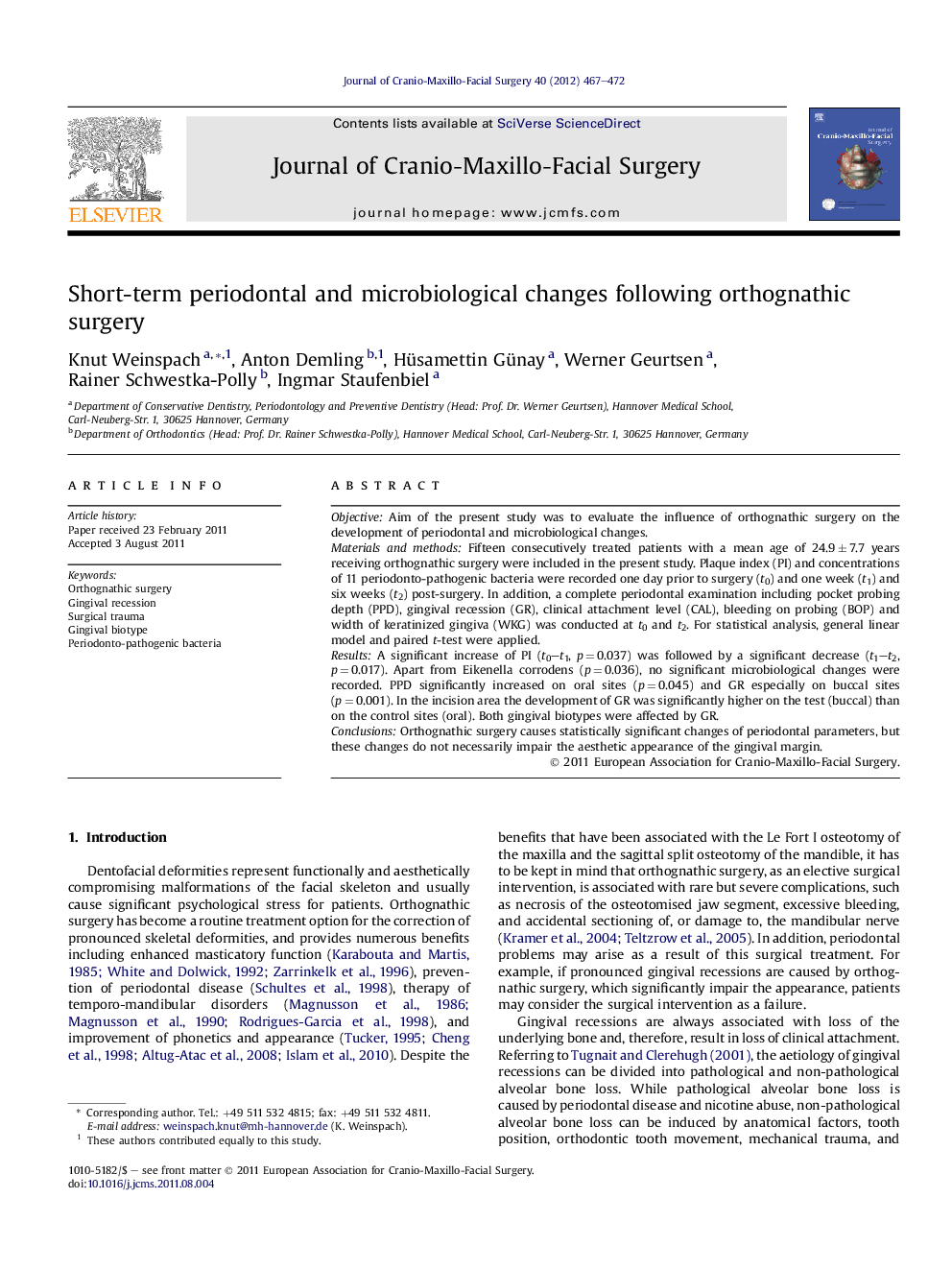| Article ID | Journal | Published Year | Pages | File Type |
|---|---|---|---|---|
| 3143486 | Journal of Cranio-Maxillofacial Surgery | 2012 | 6 Pages |
ObjectiveAim of the present study was to evaluate the influence of orthognathic surgery on the development of periodontal and microbiological changes.Materials and methodsFifteen consecutively treated patients with a mean age of 24.9 ± 7.7 years receiving orthognathic surgery were included in the present study. Plaque index (PI) and concentrations of 11 periodonto-pathogenic bacteria were recorded one day prior to surgery (t0) and one week (t1) and six weeks (t2) post-surgery. In addition, a complete periodontal examination including pocket probing depth (PPD), gingival recession (GR), clinical attachment level (CAL), bleeding on probing (BOP) and width of keratinized gingiva (WKG) was conducted at t0 and t2. For statistical analysis, general linear model and paired t-test were applied.ResultsA significant increase of PI (t0–t1, p = 0.037) was followed by a significant decrease (t1–t2, p = 0.017). Apart from Eikenella corrodens (p = 0.036), no significant microbiological changes were recorded. PPD significantly increased on oral sites (p = 0.045) and GR especially on buccal sites (p = 0.001). In the incision area the development of GR was significantly higher on the test (buccal) than on the control sites (oral). Both gingival biotypes were affected by GR.ConclusionsOrthognathic surgery causes statistically significant changes of periodontal parameters, but these changes do not necessarily impair the aesthetic appearance of the gingival margin.
